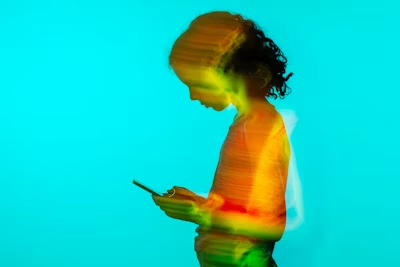As the new year begins, a growing movement in the U.S. is gaining traction as individuals seek to balance their digital lives with mental and emotional well-being. The rise of “mindful technology use” marks a shift in how Americans are rethinking their relationship with screens, social media, and devices. With an increasing awareness of the impact constant connectivity has on mental health, many are implementing intentional habits that encourage a healthier, more focused use of technology.
Reports show a significant increase in the adoption of digital well-being practices, with millions of Americans turning to tools, apps, and routines designed to reduce screen time, prevent digital burnout, and foster mindfulness. This shift follows years of criticism over the detrimental effects of excessive screen time, which has been linked to anxiety, stress, sleep disturbances, and decreased productivity.
“The pandemic forced many of us to depend heavily on technology for everything from work to socializing. As we moved into 2025, people are starting to realize that their devices are taking more than they’re giving back,” said Emily Brooks, a digital health expert. “Now, more people are focusing on creating boundaries, using tools to manage their screen time, and prioritizing real-world interactions.”
The increasing adoption of mindful tech use is evident in the rising popularity of smartphone apps and features aimed at promoting digital well-being. Tools that help users track their screen time, set app usage limits, and block distracting notifications are seeing widespread use. For example, Apple’s “Screen Time” feature and Google’s “Digital Wellbeing” initiative have become crucial for people seeking to monitor and control their tech consumption. Rather than focusing solely on productivity, the emphasis is now on fostering relaxation, rest, and focused work.
However, mindful technology use goes beyond just limiting screen time. More users are discovering ways to make their digital experiences more meaningful. Practices such as social media detoxes, “unplugged” weekends, and digital decluttering are becoming more common as individuals seek to reclaim their time and mental space. Mindfulness apps like Calm and Headspace have also embraced digital detox strategies, encouraging users to incorporate practices like meditation and breathwork into their daily routines.
The rise of mindful tech use is also sparking innovation in the wellness industry. Retreats, workshops, and even coaching services dedicated to tech well-being are gaining popularity. These programs teach individuals how to develop healthier digital habits, disconnect when needed, and enjoy offline activities. This growing interest in tech well-being services reflects a broader societal shift toward prioritizing self-care and mental health.
While the trend signals a positive change in how people engage with technology, experts warn that maintaining consistency can be challenging. With technology deeply integrated into both personal and professional lives, striking the right balance between productivity and well-being is no easy task. Experts recommend creating intentional moments of disconnection, such as setting aside designated tech-free hours or establishing screen-free zones at home. Practicing digital mindfulness is essential to preventing burnout and ensuring that technology enhances rather than hinders well-being.
As technology continues to influence modern life, mindful tech use is emerging as a key factor in building a healthier digital culture. For many Americans, this shift represents the beginning of a more balanced relationship with technology—one that supports well-being instead of diminishing it. In 2025, as the demand for mental health support and self-care continues to grow, the integration of mindful technology use may become one of the defining trends of the year.


